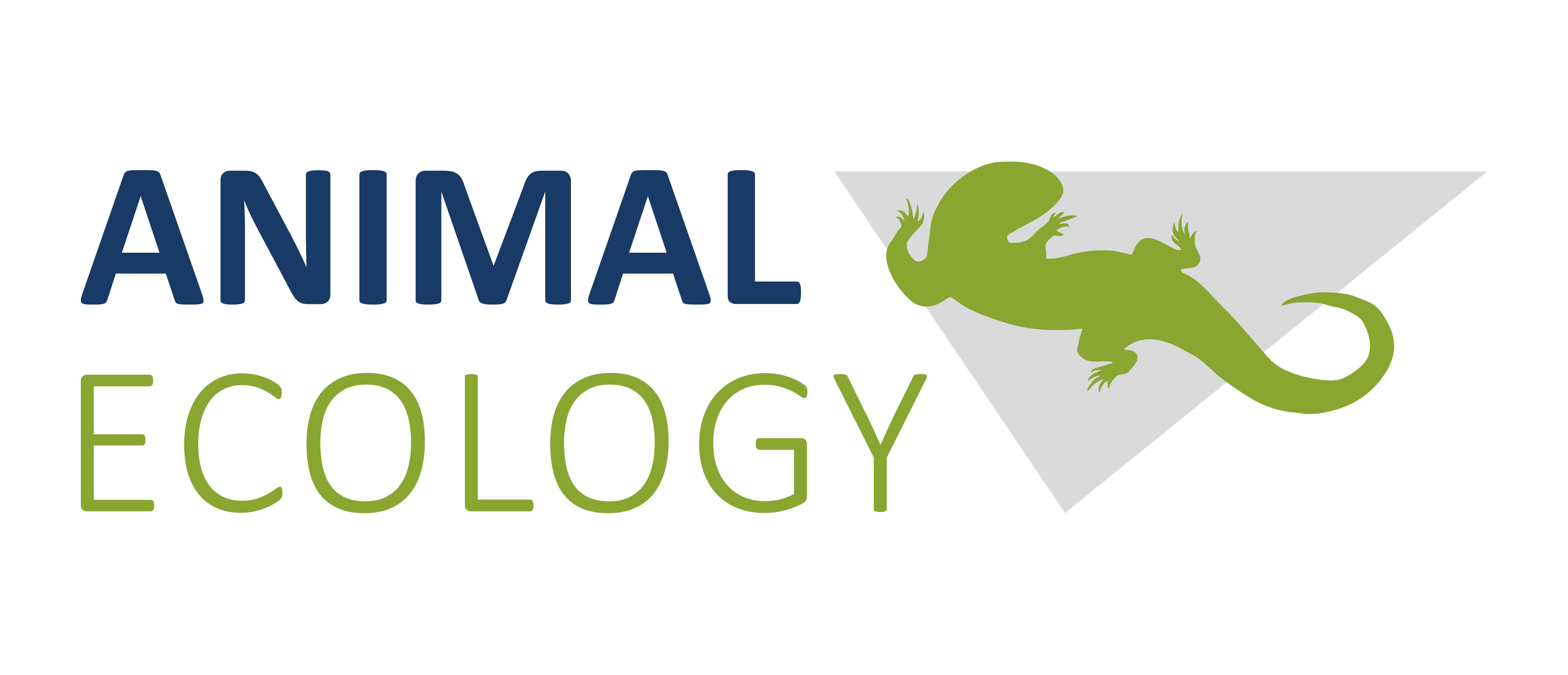Open thesis topics
The animal ecology research group offers the possibility to write bachelor and master theses as well as to conduct research projects on various animal ecology issues. Here you will find information on current and potential topics. If you have your own ideas for your thesis, they are always welcome. Either way, feel free to make an appointment with us. We are looking forward to your request!
Biodiversity dynamics in sand landscapes
How does the biodiversity of animal communities alter with land use change, habitat degradation and restoration? We focus on taxonomic and functional diversity including analyses of species diversity, changes in species communities and characterisation of indicator species, as well as the relationship between environmental conditions and the occurrence of certain biological traits in different species. Various species groups can be worked on, with arachnids and insects (preferably ants, ground beetles, short-winged beetles, grasshoppers, wild bees, and hoverflies) being particularly recommended.
Urban ecology, novel ecosystems and urban animal ecology.
In this thematic field we are interested in (1) mapping developments and prospects of urban biodiversity, (2) analysing how the urban matrix (sealing, fragmentation, urban heat island, human use) affects biodiversity, (3) exploring which animal species can be found in cities, (4) how animals in cities cope with novel stressors – including, for example, light and noise pollution, pollutants in air, water, and soil, and possibly also neophytes – and (5) how animals adapt to changed living conditions in cities. A wide variety of research activities, ranging from biodiversity surveys to analysis of biotic interactions and ecosystem services to experimental approaches, is possible. A close relation to ecological urban development and planning as well as urban species and nature conservation can be established. In principle, all species groups can be addressed. Exemplary topics that can be worked on in different cities would be:
- Spatial and temporal dynamics in biodiversity along urban-rural gradients
- Animal-plant interactions (e.g. pollination, herbivory) on neophytes
- Insect diversity on urban trees
- Biodiversity surveys in typical urban habitats, such as brownfields, gardens, green roofs, roadside vegetation, water bodies, etc.
- Influence of the urban matrix on building nesting birds
- Effects of light pollution on nocturnal insects and bats
- Behavioral changes in specific species; for example, one question would be the extent to which noise pollution affects song behavior in grasshoppers, birds, and amphibians
- Intra-specific trait differences between rural and urban populations (e.g., insect morphometrics, fitness, reproduction)
- Behavioral changes in individuals in urban environments: altered movement patterns, cognitive adaptations, expression of certain personality traits
Biodiversity of peatlands
Peatlands can be true biodiversity hotspots for rare and highly specialized species. However, many peatlands have been severely degraded in recent decades, due to intensive land use, agricultural substance inputs, and climate change, among other factors. In some places, therefore, one finds only small relicts of formerly large peatland complexes, but there are also still large-scale peatland landscapes, such as the Amtsvenn or the Vechtaer Moor, where renaturation measures should contribute to the preservation of these special habitats in the medium term. We are interested here first of all in the condition of various peatlands. By means of biodiversity surveys, we would like to determine which moor-typical species and species communities still occur and what prospects they have in the respective areas. Indicator species can also be used to assess the current condition and the degree of habitat degradation. In a further step, biodiversity surveys in the course of renaturation measures are of interest. Are such measures successful? Do they lead to a return of bog-typical species or to an increase in populations? What does this mean for metapopulations in a highly fragmented landscape, in which peatlands are often scattered like small islands? A very wide range of species groups can be worked on, with a particular focus on taxa with a high indicator potential for peatland landscapes. These include, for example, dragonflies, ground beetles and water beetles, spiders and butterflies, and amphibians.
Species protection and applied animal ecology
The focus here is primarily on studies of animal groups and species relevant to planning and their habitats. For example, many FFH species, protected and rare animal species are facing multiple challenges in times of global change. Among other things, we are interested in the distribution and population structure of these species. We also want to find out what measures can be taken to ensure a favorable conservation status as defined by the Habitats Directive and what nature conservation can do to achieve this. In this context, we develop habitat models, conduct ecological surveys and assess current species occurrence and population status as well as the influence of global change. The aim is to create a scientific basis for evidence-based species conservation and thus to develop measures for the protection of species and populations together with practitioners from applied nature conservation. Of course, we are also interested in monitoring approaches and success controls of existing practices. Especially in this area, we work intensively with nature conservation associations, biological stations, nature conservation authorities and other initiatives from the field.
Ideas for final theses would go in the following direction:
- Distribution and population structure of species relevant for nature conservation
- Faunistic population surveys in protected areas and/or special habitats
- Monitoring the performance and success of species protection measures
- Assessment of damage to biodiversity
- Suitability of replacement habitats for rare, protected and endangered species
Practical insect conservation
In times of a global insect crisis, measures for the protection of the corresponding animal groups (but also other invertebrates) are omnipresent. In this context, we are interested in the effectiveness of the measures on the one hand, applying monitoring approaches and/or experiments to verify the actions. On the other hand, we also initiate the optimization and development of conservation measures with our research and advise practitioners and initiatives on their implementation. Lastly, we are also interested in the public perception of different insect conservation concepts. Possible topics could be:
- Animal-Aided Design: perspectives and concepts for insect conservation
- Suitability of seed mixtures and flowering strips for pollinator protection
- Suitability of telemetry transmitters in flying insects to study habitat use and their movement patterns
- Possible conflicts between flora and pollinator protection in commercial seed mixtures
- Creation of microhabitats as stepping stone biotopes
- Optimisation of garden design for invertebrate protection
- Effects of green space management (e.g. mowing, leaf blowers) on insects
- Suitability of plant assortment in hardware stores
- Insects (and invertebrates) in public perception and the media
- Optimisation of habitats for invertebrate fauna
Pollination ecology
Pollinators perform a central and important function in the landscape while being severely affected by current pollinator declines and species extinctions. Climate change, land-use change, pesticide use, neophytes, and many other stressors play an important role in pollinator declines and species extinctions. Through various studies, we will test how different stressors affect the physiological and sexual fitness of pollinators. Possible topics would be:
- Suitability of neophytes for pollinators in terms of pollen and nectar quality
- Effects of any stressors (e.g., microplastics, monophagous diets, air pollution) on pollinator flight performance, morphometrics, and reproductive success
- Effects of any stressors on pollinator behavior
- Evolutionary ecology work could further investigate the importance of pollinators in the development of different flower forms.
Citizen Science, iEcology und Secondary Data in der Landschaftsökologie
The dramatic loss of biodiversity demands new and rapid ways to generate knowledge about the living environment. Therefore, new data sources are used, analysed, and integrated that were not produced by institutional research and were often intended for other purposes. This includes information from global citizen science platforms (iNaturalist, eBird) as well as various media formats (image, video, text) from social media or other online resources such as Google Trends or Wikipedia. Students who enjoy online research, data science, and the advancement of this emerging field of research can address methodological and/or content issues. Examples here include:
- What ecological interactions can be inferred from Citizen Science photorecordings, for example, plant-pollinator networks of native and invasive species or updates to species lists of symbiotic or parasitic relationships?
- Can phenology, distribution and behavior of species be associated with climate warming or land use change by using online data?
- Which environmental parameters affect intra- and interspecific trait variation and how can traits be extracted from thousands of multimedia files?
- Can anthropogenic pressures on habitats be recorded, such as visitor flows and -activities in nature reserves or parks, the impact of recreational anglers on inland waters, or conflicts with wildlife?
A lot of creativity is essential for this exciting discipline as methods still need to be developed. Programming skills are helpful but not a requirement. Connections with the other research topics of the working group are also possible, for example in comparative or integrative studies of online resources and scientific data collection.
Biodiversity monitoring
This is a very broad range of topics in which a wide variety of theses can be written. Basically, we distinguish two main topics: (1) Biodiversity monitoring of different landscapes, habitats, areas (e.g. protected areas) or recording of biodiversity changes along different environmental gradients (e.g. land use). Here, there are no restrictions regarding the animal groups that can be worked on or the habitats in which the studies are to take place. There are also no geographical restrictions. A biodiversity survey in a quarry forest in Sauerland is just as possible as a work in a floodplain forest in northeastern Greece or a steppe in Russia or a river landscape in Norway. In addition, we (2) are also very interested in different approaches and methods of biodiversity recording. Here, for example, we are interested in comparing methods. For example, an exciting question could be how the results of a live insect monitoring differ from those of a lethal insect monitoring. New technical possibilities are also interesting. These include approaches that combine remote sensing and spatial modeling, or apply technical possibilities for automated biodiversity monitoring, the use of apps, or AI.
Invasion biology
For this topic we deal with the spread of alien species, i.e. non-native species that have arrived in an area where they do not occur naturally due to the direct or indirect influence of humans. In this context, we are initially interested in the distribution of various neozoa (= non-native animal species) and the reasons for their current spread. The latter we work out by developing habitat models for these species and analyzing why the species occur where and on which environmental factors this depends. Based on this, we investigate what consequences the occurrence of neozoa has for native species and what interactions result from this. For example, is there increased competition or are there negative impacts? Do we see no effects or even positive aspects? A concrete example would be the question of the distribution of the Asian ladybug. Where does this species occur? What environmental factors favor its occurrence? Does the presence of the Asian ladybug reduce the species numbers and abundances of native ladybug species? We also conduct these impact analyses explicitly using the example of neophytes (= non-native plant species) by analyzing how native animals interact with non-native plants. Interesting research approaches are, for example: Are non-native plants used as food sources by native pollinators and herbivores? Do neophytes provide suitable habitats or microhabitats?
Reviews and literature work
It is not always possible (or desirable) to conduct your own data collection. Especially in the context of Bachelor theses or theses of undergraduate students there might not be enough time available. Of course, this is not a problem, since very interesting theoretical or conceptual papers can be written. The evaluation of existing data sets is also possible at any time.


